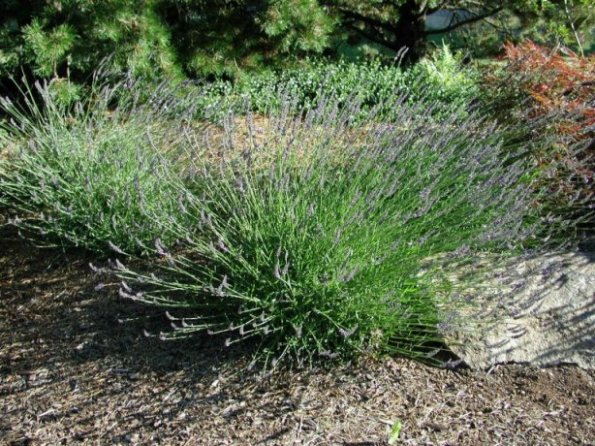| Botanical Name: Lavandula angustifolia | |
| Common Name: English Lavender |

-
Anatomy
-
Culture
-
Design
Plant Type
Perennial, Herb
Height Range
1-3'
Flower Color
Lavender
Flower Season
Summer
Leaf Color
Blue Green, Grey Green, White
Bark Color
Grey
Fruit Color
n/a
Fruit Season
Fall
Sun
Full
Water
Very Low, Low
Growth Rate
Moderate
Soil Type
Sandy, Clay, Loam, Rocky, Unparticular
Soil Condition
Average, Poor, Well-drained, Dry
Soil pH
Neutral, Basic
Adverse Factors
Attracts Bees
Design Styles
English Cottage, Formal, Mediterranean, Ranch, Spanish
Accenting Features
Fragrance, Showy Flowers
Seasonal Interest
Summer
Location Uses
Perennial Border, Shrub Border, Foundation, Parking Strip, Patio, Raised Planter, Walkways, With Rocks
Special Uses
Container, Cut Flowers, Hedge, Mass Planting, Naturalizing, Small Spaces
Attracts Wildlife
Butterflies
Information by: Stephanie Duer
Photographer: Modesto Jr. College
Photographer: Modesto Jr. College
-
Description
-
Notes
English lavender is a dependably hardy, heat tolerant, drought resistant perennial, well suited to our arid, cold climate. Aromatic, green to grey-green foliage has a rich, resin scent, and grows in tight clumps 1 to 2 feet in height and width, depending on variety. Flowers form at the ends of stiff stems, in whorls of blue to lavender to purple, again, depending on variety. Flowers may add another 6 to 12 inches of height. Use in any sunny spot, such as perennial border, herb garden, parkstrip, lining a pathway.
Lavenders thrive in full sun and poor soils, though a little kindness will be rewarded with a bounty of flowers. Plant in well-drained soil. Cut back 1/3 to 1/2 size in spring when new growth begins to emerge. Does not like to be divided, though sometimes stems that touch the ground will root, and these can be snipped from the parent plant and transplanted. Deer resistant.